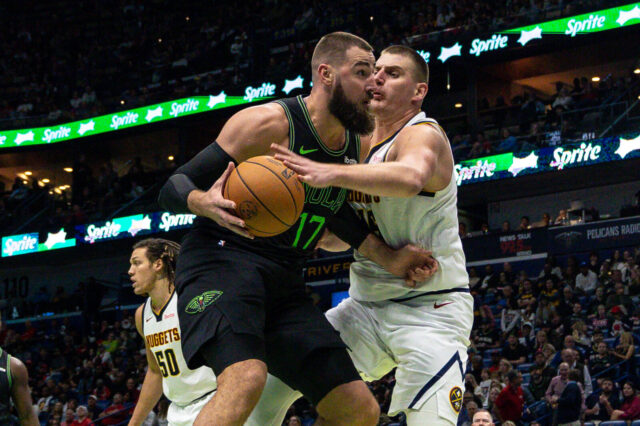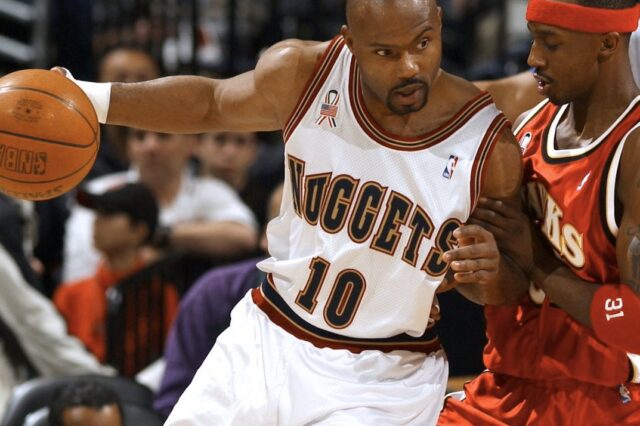***The Denver Nuggets have many young pieces on the roster, and several vets who are hitting free agency either this year or next. This creates an interesting conundrum for the front office: which veterans should be retained and which need to be added from outside of the organization to foster the best chance at building and sustaining a competitor over the next several years?
The Nuggets could have up to $44.9 million available under the cap if they chose to renounce their FAs and let Mike Miller go, which means Denver has a wealth of options this offseason. As such, we here at Denver Stiffs will be exploring potential additions at all positions, both high-priced and not. We hope you enjoy this series throughout the leadup to free agency.***
Setup
The Toronto Raptors came into the 2016-17 postseason with one goal in mind: dethrone the Cleveland Cavaliers from their place on top of the Eastern Conference. By signing DeMar DeRozan to a max contract and trading for Serge Ibaka and P.J. Tucker during the year, the Raptors committed to success this season.
Fast forward to the postseason, and the Raptors are in a dogfight in the first round with the Milwaukee Bucks. DeRozan and Kyle Lowry have struggled to shoot with consistency, and the supporting cast around them hasn’t accomplished what it had to do: remove pressure from the star backcourt tandem.
If the Raptors fall in the first round, the offseason implications are staggering. Lowry is an unrestricted free agent and could leave if he so pleased. Ibaka and Tucker are also free agents. If the Raptors try and sign everyone, they will be far above the luxury tax line and be forced to pay excessive money for a team that might never beat Cleveland. At least one of the free agents is not returning. My money is on Tucker, and he would be an excellent addition to the Denver Nuggets. He comes in as the 34th ranked free agent using advanced metrics, and with his main strength being defense, it’s hard not to like the fit.
Game
P.J. Tucker is a physical forward who began the season as one of the veteran leaders on the Phoenix Suns. The Suns are incredibly young, with five players that began the season at 21 years old or younger, and they looked to Tucker for much of his time there. Tucker was the team’s best all-around defender and took on a variety of tough assignments while he was there. His defensive skills translate to advanced metrics as well: Tucker ranked as the 17th best small forward using defensive RPM, which doesn’t sound that impressive until it’s realized that Tucker played more total minutes than 11 of those players. The only players that he didn’t have more court time than were Michael Kidd-Gilchrist, Andre Roberson, Jimmy Butler, Giannis Antetokounmpo, and Solomon Hill, a who’s who of wing defenders in today’s NBA.
Tucker spent about 83% of his minutes at small forward and 16% at power forward this season, serving as the occasional 4-man in smaller lineups. He can switch onto opposing guards and play smart defense, and he’s strong enough to hold his own in the post and on the glass against a variety of big men. He won’t be considered much of a stretch four, but he did hit over 35% of his threes this season and went 24/60 from beyond the arc in Toronto after being traded. In an offense where he doesn’t have to work too hard for open shots, he will knock them down, given that he expends so much effort on the defensive end.
Fit
Like Gordon Gross in his last free agency profile on Jrue Holiday said, he (in this case P.J. Tucker) would immediately be Denver’s best defender. His attention to detail from possession to possession is strong, and while forward defense wasn’t Denver’s biggest weakness, it cannot be construed as a strength. Adding a hard-nosed defender like Tucker is just what Denver needs on the roster. It’s something that Darrell Arthur would normally provide, but it’s hard to expect much from Arthur given his knee issues.
The fit with Tucker isn’t just defensive though. Tucker takes the right kinds of shots within the offense, and he doesn’t force the issue himself. He only attempted 575 total field goal attempts plus free throws, but his “Morey percentage” was still very good.
This content is no longer available.
The goal of “Morey Percentage” is to identify players that attempt the most valuable shots on the floor at the highest frequency. Juancho Hernangomez is the king of this, which is one of the reasons I value him so highly. Will Barton improved as the season went along, but Wilson Chandler did not, scoring by far the lowest. How accurate is this chart in showing a player’s offensive value? Basketball Reference has a calculation for offensive rating, and here is how Nuggets wings and forwards scored on that compared to Morey Percentage:
| Player | Morey Percentage | Offensive Rating |
|---|---|---|
| Juancho Hernangomez | 0.8930 | 118 |
| Gary Harris | 0.8234 | 121 |
| Kenneth Faried | 0.7632 | 123 |
| Danilo Gallinari | 0.7625 | 126 |
| Will Barton | 0.7316 | 112 |
| Darrell Arthur | 0.7131 | 110 |
| Wilson Chandler | 0.6790 | 109 |


